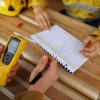Before embarking on this course, there are role titles in any federally-mandated workplace drug program that supervisors should familiarize themselves with.
Workplace drug program terms to know

Many people are part of the workplace drug-screening process. From the employee to the certified scientist and Medical Review Officer, each individual has a specific role in ensuring the process works and a business is complying with all federal regulations.
This training will define those roles, provide insight into the relationships in the drug-screening program and help supervisors gain a fuller understanding of drugs and alcohol and what to look out for.
This seminar meets all training requirements mandated by the U.S. Department of Transportation (DOT) for the following agencies:
After completing this training, participants should expect to:
Supervisors who work with employees at any level should be educated in recognizing the potential of substance abuse and misuse. While only a few staff members in a business are required under federal law to receive training in drug screening and policy, we at TSS believe providing training to as many staff members as appropriate is the best way to preserve a safe work environment.
Educating employees about how the drug-screening program is administered is critical. Employees need to be aware of company drug policy and understand its requirements and expectations. We hope employees will walk away from this training with a greater appreciation of how important supporting the company drug policy is and with a greater willingness to report incidents that may increase the risk of injury in the workplace.

Before embarking on this course, there are role titles in any federally-mandated workplace drug program that supervisors should familiarize themselves with.

The costs associated with drug and alcohol use in the workplace are far-reaching. Drugs and alcohol not only make a workplace unsafe, but they also threaten a company’s bottom line. A solid drug screening program ensures a safe work environment and protects the rights and workplace expectations of everyone involved.

In September 1986, President Ronald Reagan signed Executive Order No. 12564 mandating a drug-free federal workplace. The order established “standards and procedures to ensure fairness in achieving a drug-free federal […]

Reasonable suspicion testing requirements are designed to keep impaired employees from injuring themselves or others. The Department of Transportation mandates strict protocols for reasonable suspicion testing that supervisors must follow.

As a supervisor charged with ensuring a drug-free work environment, it is important to know your employees, their typical work habits and when those change. There are distinct clues to watch for when considering a reasonable suspicion determination.

The ever-changing status of marijuana legislation requires that that supervisors have a full and detailed understanding of the drug in its different forms, local and federal laws.

Stimulants, or uppers, include a diverse selection of drugs. Some of these are prescription drugs and are legal, others are illegal.

Opioids are a class of drugs that work in the brain to produce a variety of effects, including the relief of pain. Natural opiates include morphine, codeine, and heroin. Synthetic opiates include Oxycodone, Vicodin and Fentanyl.

The drugs in this category distort a person’s ability to think and communicate rationally, or even to recognize reality, sometimes resulting in bizarre or dangerous behavior.

Alcohol is the most commonly used drug in the world and is widely socially accepted. It has been used as a sedative, antiseptic, even as a solvent.

The Breath Alcohol Test measures the blood/alcohol exchange in the brain. Employees regulated by the Federal Motor Carrier Safety Administration (FMCSA), Federal Transit Authority (FTA), United States Coast Guard (USCG), […]

Reasonable suspicion testing should be administered carefully and thoughtfully. How To manage a successful drug and alcohol program, employers should feel a responsibility from the start to inform and educate […]

Document, Document, Document! Documentation begins with the employer developing a comprehensive drug and alcohol policy that includes detailed directions, expectations and consequences for all drug and alcohol screening conducted by […]

You have observed and documented changes in behavior and appearance indicating that an employee may be using drugs or alcohol. Now, it is time to approach your employee for a private conversation about your suspicions.

After meeting with an employee and making the determination of reasonable suspicion, the supervisor should assist the employee in proceeding directly, and safely, to the drug or alcohol screening.

In this lesson, review each of the workplace scenarios and consider how the situation should be handled. Then, fill in your responses in the quiz section.

As the supervisor charged with determining if an employee must be removed from duty and undergo drug and alcohol testing, you must consistently follow the process laid out by the Department of Transportation and your company to ensure a drug-free workplace.